- S.D. Eibar ready for maiden La Liga outing
- SD Eibar stengthen ahead of debut La Liga season
- Can ‘Super Mario’ live up to expectations in Madrid?
- MAN IN THE GROUND – Brentford 0 – 4 Osasuna
- Historic Basque derby welcomes S.D. Eibar to La Liga
- Munich to Madrid, via Brazil – Tony Kroos
- Rakitic in Spanish Switch
- Can Spain find redemption in Rio?
- Viva Espana! A season of redemption for Spanish football
- From the old to the new: who can fill the void in years to come for La Roja?
The Stadiums of Elche CF
- Updated: 21 January, 2012

Twelve miles south west of Alicante is Elche, the shoe making capital of Spain and from time to time the local team, Elche Club de Fútbol has stepped out on to the national stage.
The club was founded in 1923 following the merger of three teams, La Sportiva, Gimnástica FC and Illice FC and spent its first three years using a variety of local grounds.
Then, on 17 October 1926 they played Levante FC in the first match at a purpose built stadium in the northern suburb of Altabix.
For the first 30 years of its existence, the Campo de Futbol Altabix suited Elche CF perfectly. It had three sides of pitch hugging terraces, whilst the fourth, southern end tapered-off as it headed east.
This terrace was home to a small tower behind the goal, which housed a scoreboard and basic facilities for the press. There was no cover, not even for the directors, but as the club spent much of its formative years in the Tercera, this wasn’t a problem.
However, things were starting to stir in Elche as the town and the club were about to get bigger.
At the start of the fifties, Elche had a population of just over 50,000, but it more than doubled in size over the next 20 years thanks to migration brought about by the expansion of the shoe industry.
A big cog in that industry was Manuel Martinez Valero who joined the club as a director in the late 1950’s. With the help of his money the club jumped from the Tercera to La Primera in two seasons, debuting in the top flight in 1959
The club purchased 49% of the shares of Altabix and set about improving the ground. Additional terracing, floodlights and small cover for the directors were added, but even then it was the smallest and probably the most uncomfortable ground in the top division.
It was also the most expensive. The shares and the renovations came at a price so spectators had to pay their way, but Altabix was full to its 18,000 capacity for most of its matches over the next decade.
Throughout the 1960’s Elche achieved mid-table finishes, with a high of fifth in 1963-64. The highlight however came at the end of the decade, when they reached the final of the Copa del Rey, losing 0-1 to Athletic Club.
Ever the wily businessman, Manuel Martinez Valero set about purchasing the remaining 51% of the shares of the ground. Since becoming President of the club in 1962, he realised that the club could not grow any bigger whilst playing at Altabix and had grand designs on building a Ciudad Deportiva or Sports City.
The sale of the land where Altabix stood would finance the building of the new stadium, but first of all Elche CF needed to buy a plot of land. In the end they settled on a patch to the west of the city, but the problems were only just beginning.
Time was called at Altabix on 16 May 1976, when Elche CF defeated Athletic Club 3-1. The win secured the club’s top flight status and midfielder Felix had the honour of scoring the last competitive goal at Altabix.
The municipality was not particularly helpful towards the club’s plans to finance the building of the new stadium, as they only allowed half of the Altabix site to be developed. Even today, some of the site is still undeveloped parkland, which bears the name of the old stadium.
They also refused to contribute to the purchase of the land for new stadium. A government grant also failed to materialise and the president’s plan to part-finance the stadium by selling parking spaces raised little in the way of hard cash.
Manuel Martinez Valero was made of stern stuff however. Having purchased land to the west of the town for 29 million pesetas, he commenced building in the autumn of 1974, even though planning permission had not been granted.
This risked a heavy fine, but he knew that the city was continuing to grow and that this new stadium would have 300,000 potential customers on its doorstep before the end of the decade. He also boldly forecast that the stadium would host a World Cup, foresight indeed.
Elche’s Nou Estadio opened on the 8 September 1976 with the president’s wife kicking off a friendly match against the Mexican national team. The stadium was only named after the erstwhile president posthumously in 1988.
On opening, the stadium actually consisted of a single open tier and had a capacity of 28,000. It was certainly more spacious than Altabix, but it could also be argued that it had arrived 5-10 years too late. Elche CF had peaked in the 1960’s and the impressive stadium was not being matched by form on the pitch.
The stadium has also seen its fair share of international football, starting with the 1982 World Cup. In preparation for the event, the Nou Estadio underwent a face-lift, just 4 years after it opened.
The government money finally arrived, and whilst some questioned the wisdom in extending an already spacious stadium, the upgrade saw another tier added and the overall capacity increased to 53,000. Elche staged three matches featuring Belgium, El Salvador and Hungary, but the overall attendance was poor.
However, some of those who did attend witnessed history in the making, when the rampant Magyars trounced El Salvador 10-1. La Selecion matches have in the main, attracted a full house, and their 5 visits to Elche have all resulted in home wins
The Estadio Manuel Martinez Valero is one of those stadiums that have won me over. Aesthetically, it is just a big, rather featureless bowl that would not look out of place in the top division of any European or South American league.
The fact that it has seen very little top flight football, sort of adds to its appeal, as does the story of determination to get it built in the first place. It is now decked out with bands of green and white seats, which has reduced the capacity to 38,750.
For much of the past 35 years, there have been more seats on show than fans, but the past year has seen an upturn in fortunes for the club. After narrowly missing out on promotion in 2010-11, Elche CF sits atop La Segunda, unbeaten in the last nine matches. If they do succeed it will bring an end to 24 years without top flight football.
Maybe a smaller stadium would have suited the club and the city better? Maybe it was a case of the shoemaker getting too big for his boots? However, doing it the easy way just wasn’t Manuel Martinez Valero’s style and the story of Elche CF is all the better for it.
_____________________________
To read more on the footballing stadiums of Spain, visit Chris’s excellent site Estadios de fútbol en España
One Comment
You must be logged in to post a comment Login

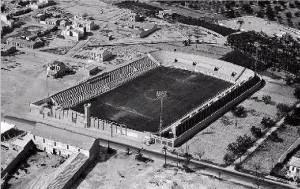
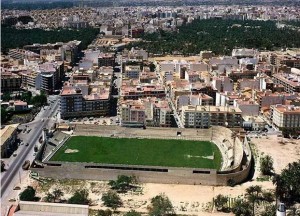
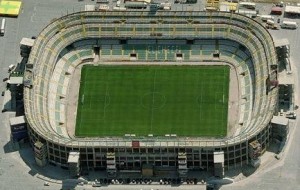


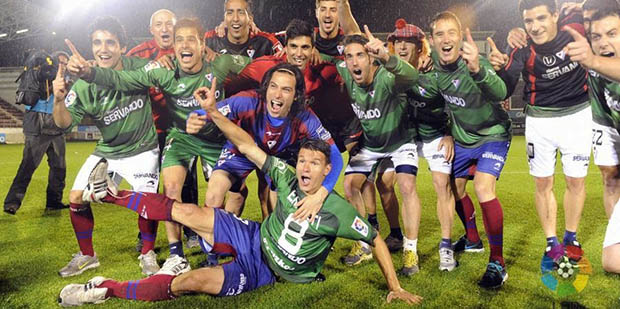
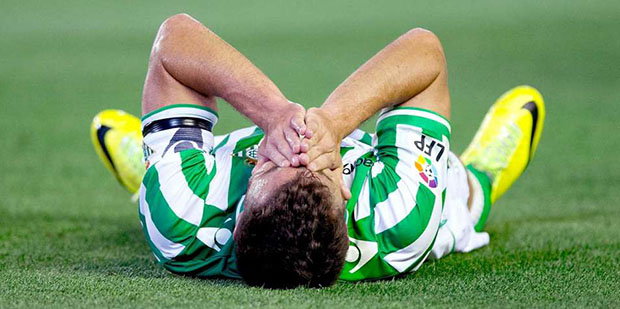


Pingback: Abroad property finder » News about houses for sale in spain issue #1